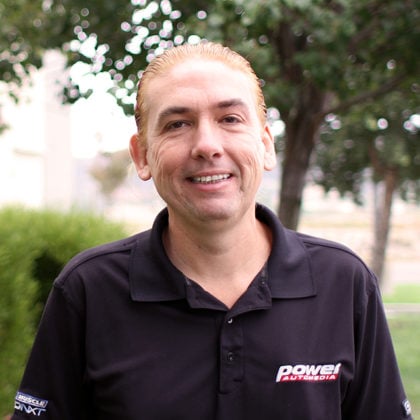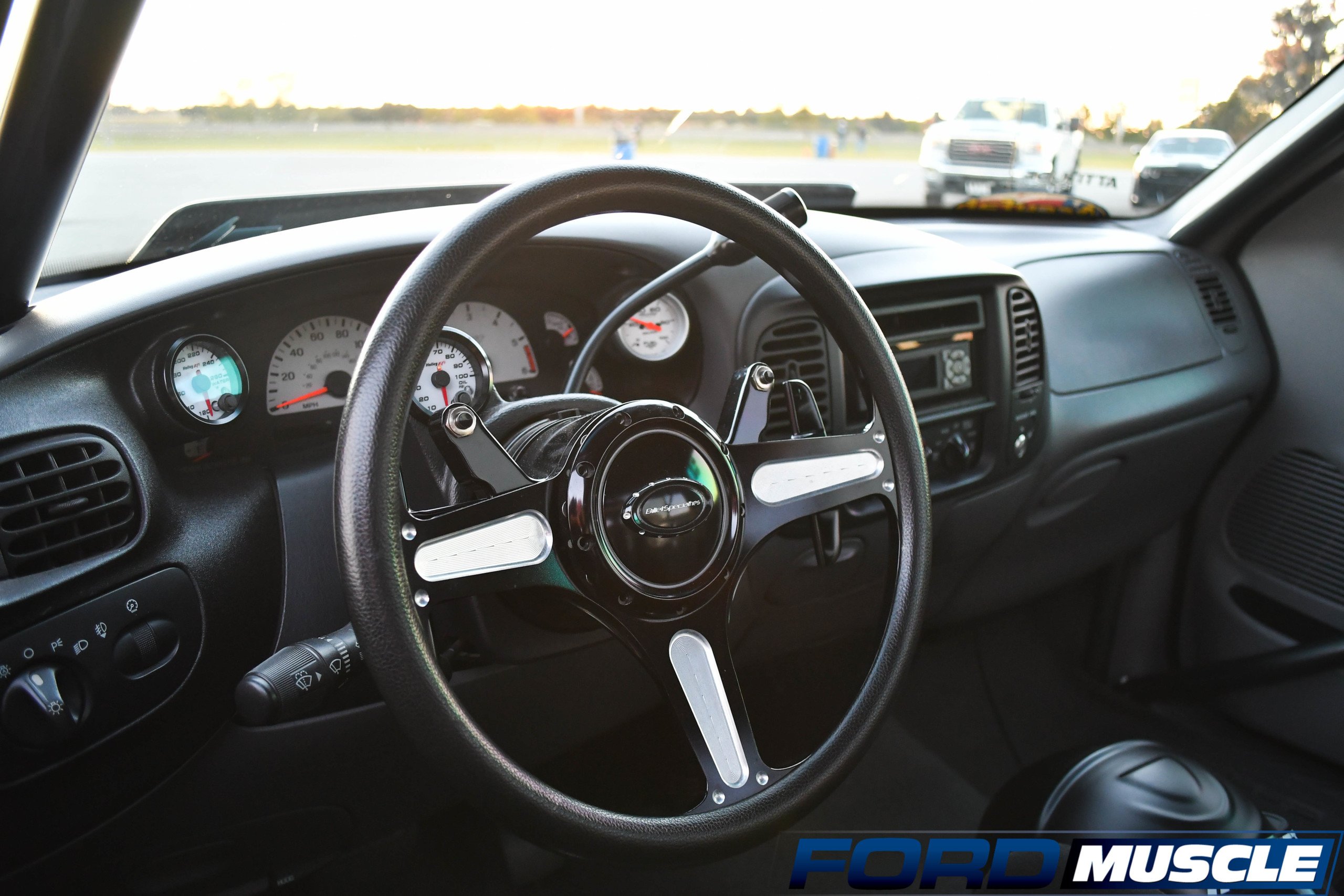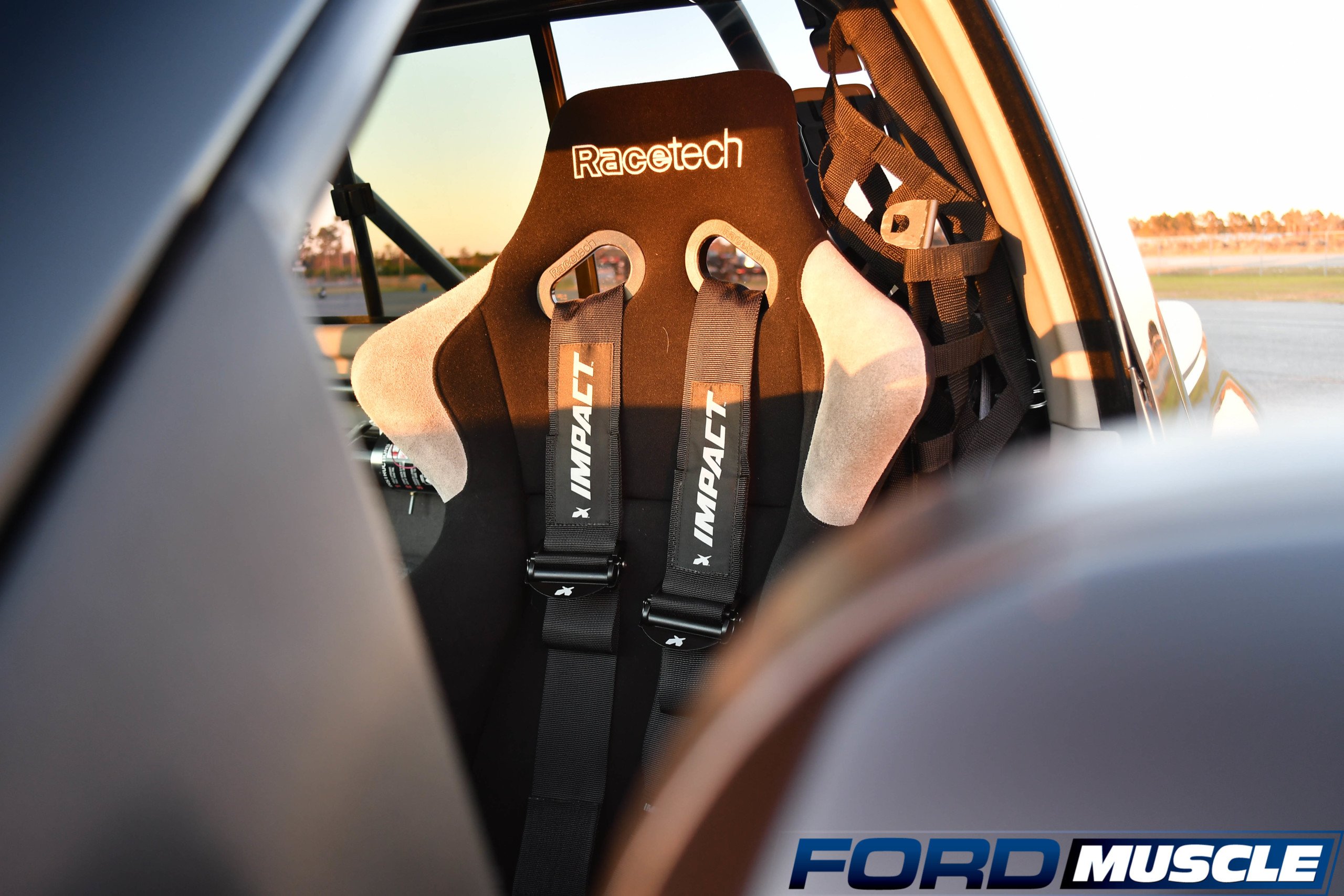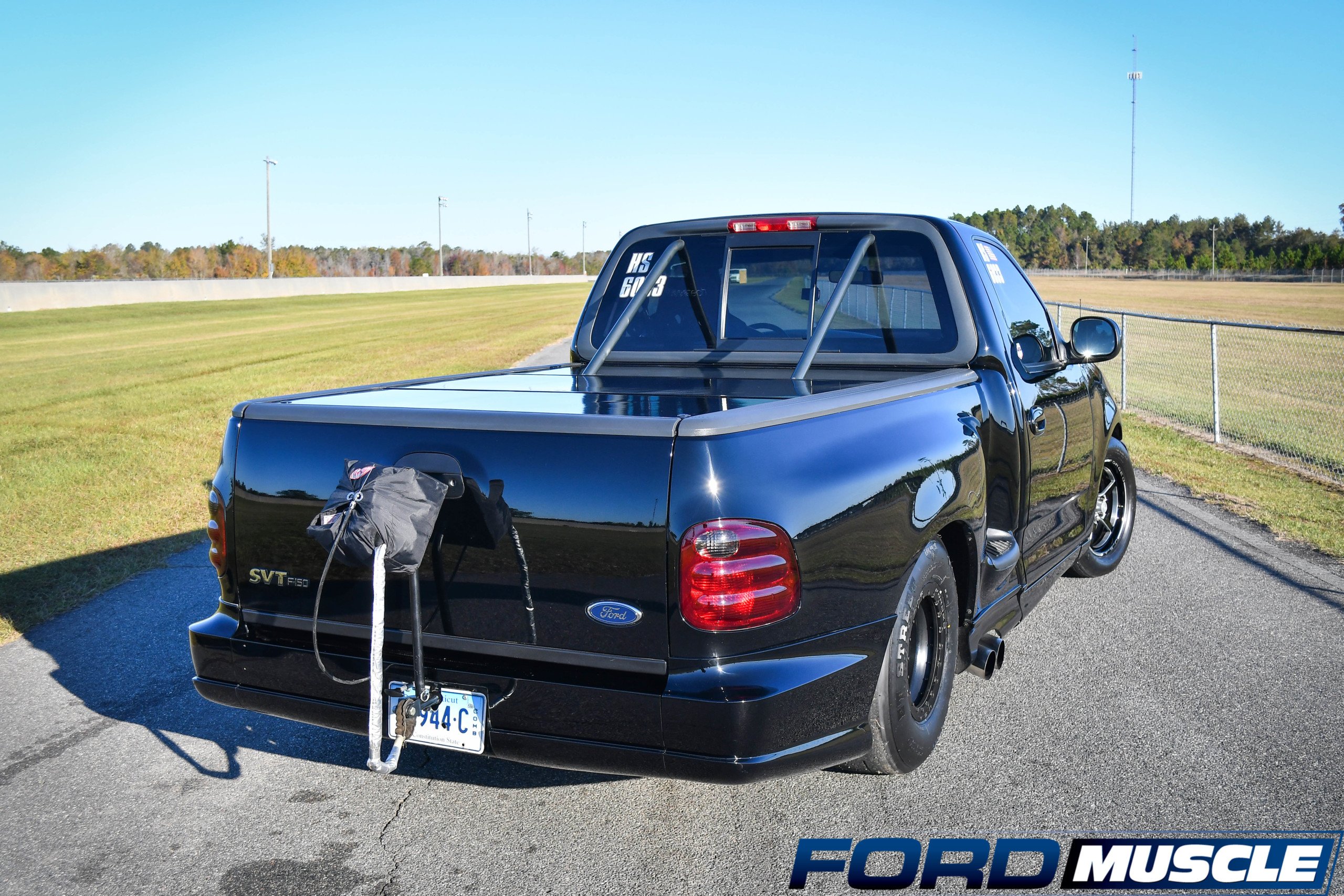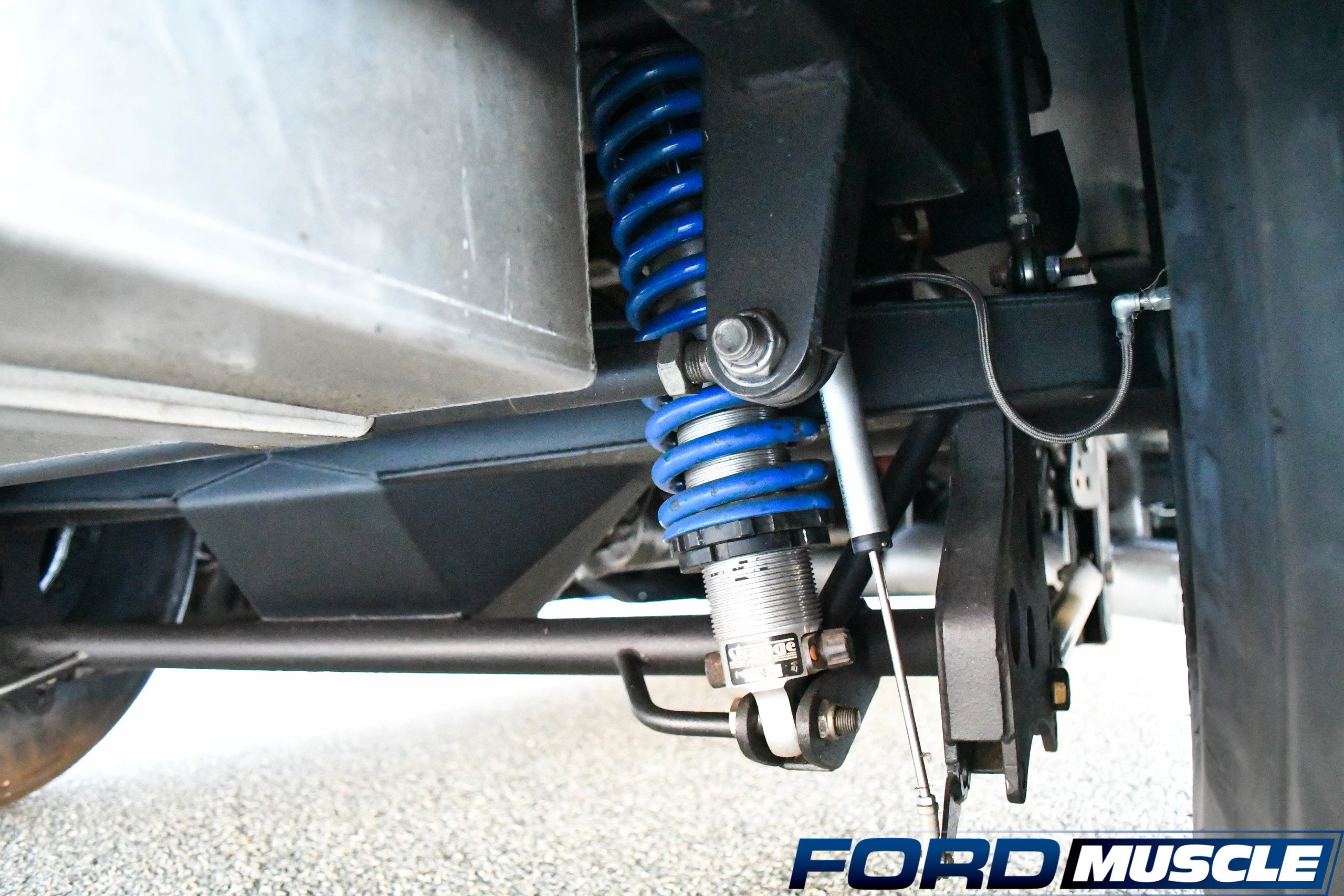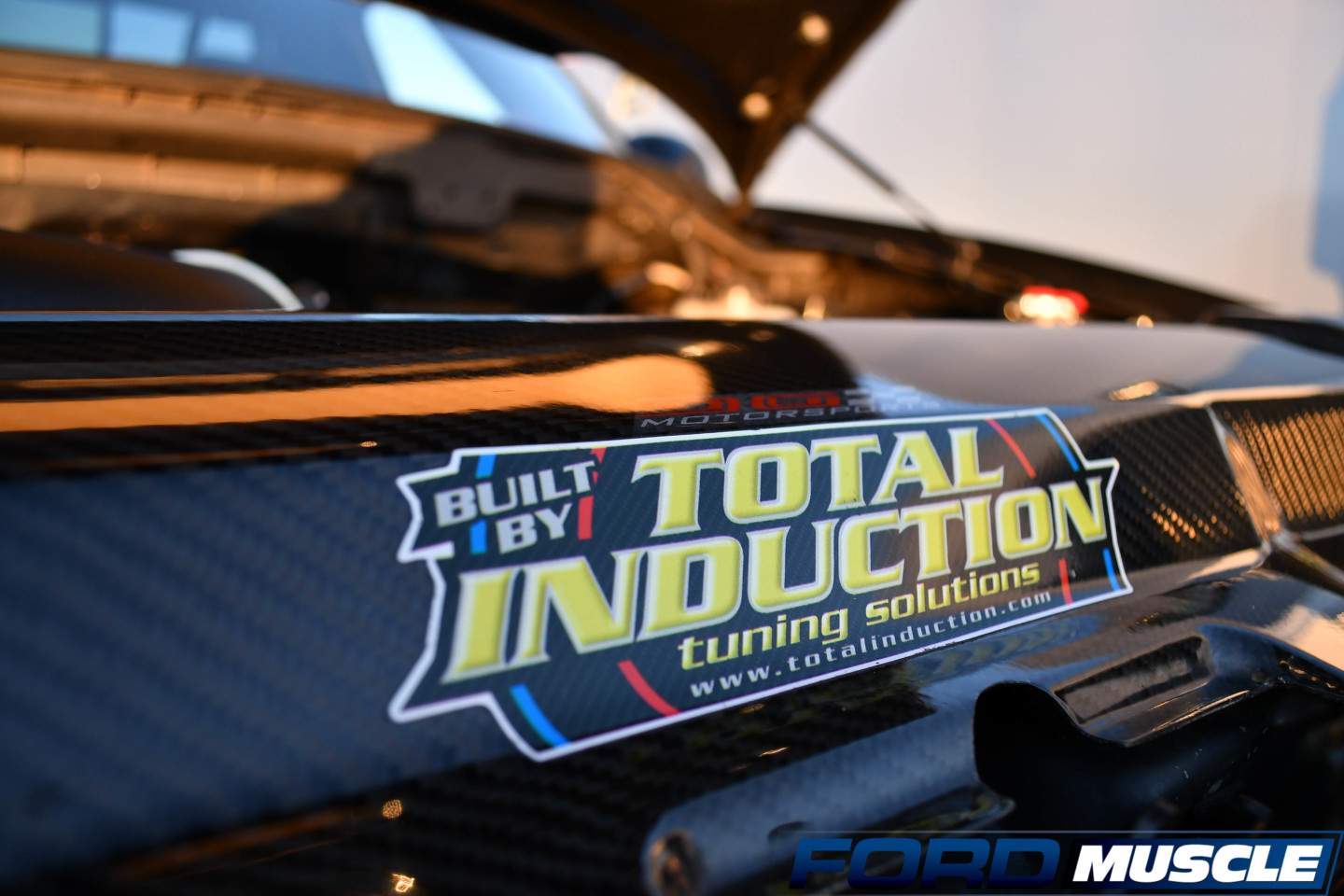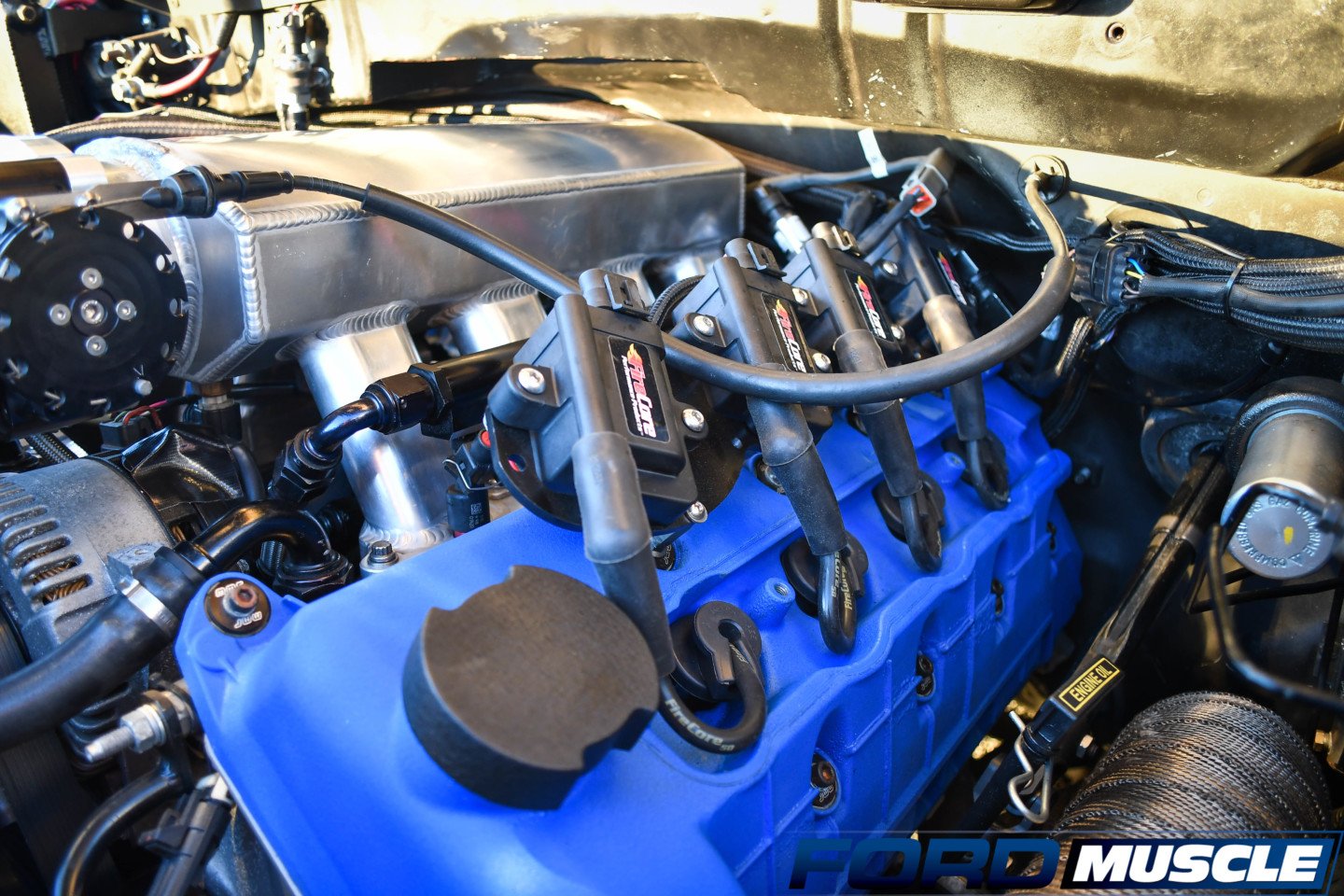As this unassuming 2000 SVT Lightning pulls into the burnout box and turns the sticky Mickeys out back into billowing clouds of smoke, the pickup doesn’t cause much of a stir. However, when Paul Albino revs it and bumps it into the beams on the transbrake, the raspy growl of the twin-turbo modular engine underhood turns heads.
What happens next is unexpected, to say the least, as the 4,000-pound truck blasts to quarter-mile elapsed times as low as 7.65-seconds at 182 mph.
When I saw ads for the Lightning, I instantly knew I wanted a supercharged V8 truck. — Paul Albino
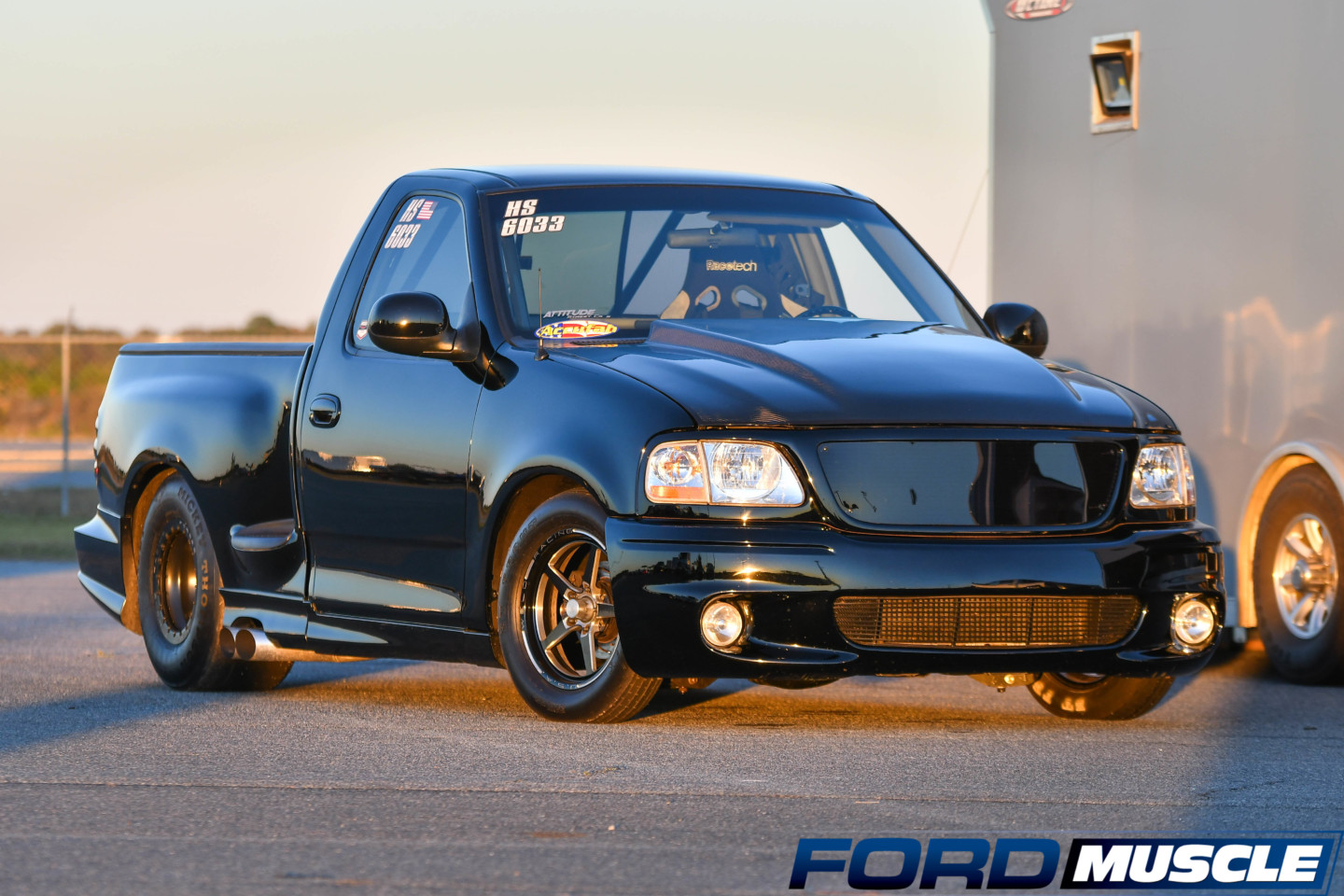
After hearing about the supercharged V8 truck, Paul Albino fell in love with the SVT Lightning. After acquiring this ebony example, he quickly escalated its performance from bolt-ons to boost, and these days, it delivers 7-second quarter-mile elapsed times. Behind that fascia, a front-mount, air-to-air intercooler and methanol injection kit built by Keith Hastings at Total Induction cools the boost from two Precision turbos.
.
Building such a project is a labor of love, and like many of us, Albino’s journey to building a fast machine began at an early age with influence from an automotive role model with a classic ride.
“My Uncle, Tom Barbieri, always had cool cars and took us for rides when we were very young. I remember a ’55 Chevy hardtop that was two-tone aqua and white that sticks out in my mind. Sitting in the front seat of that car while he rowed through the gears made a lasting impression on me. From that point on, I couldn’t wait to get my own someday.”
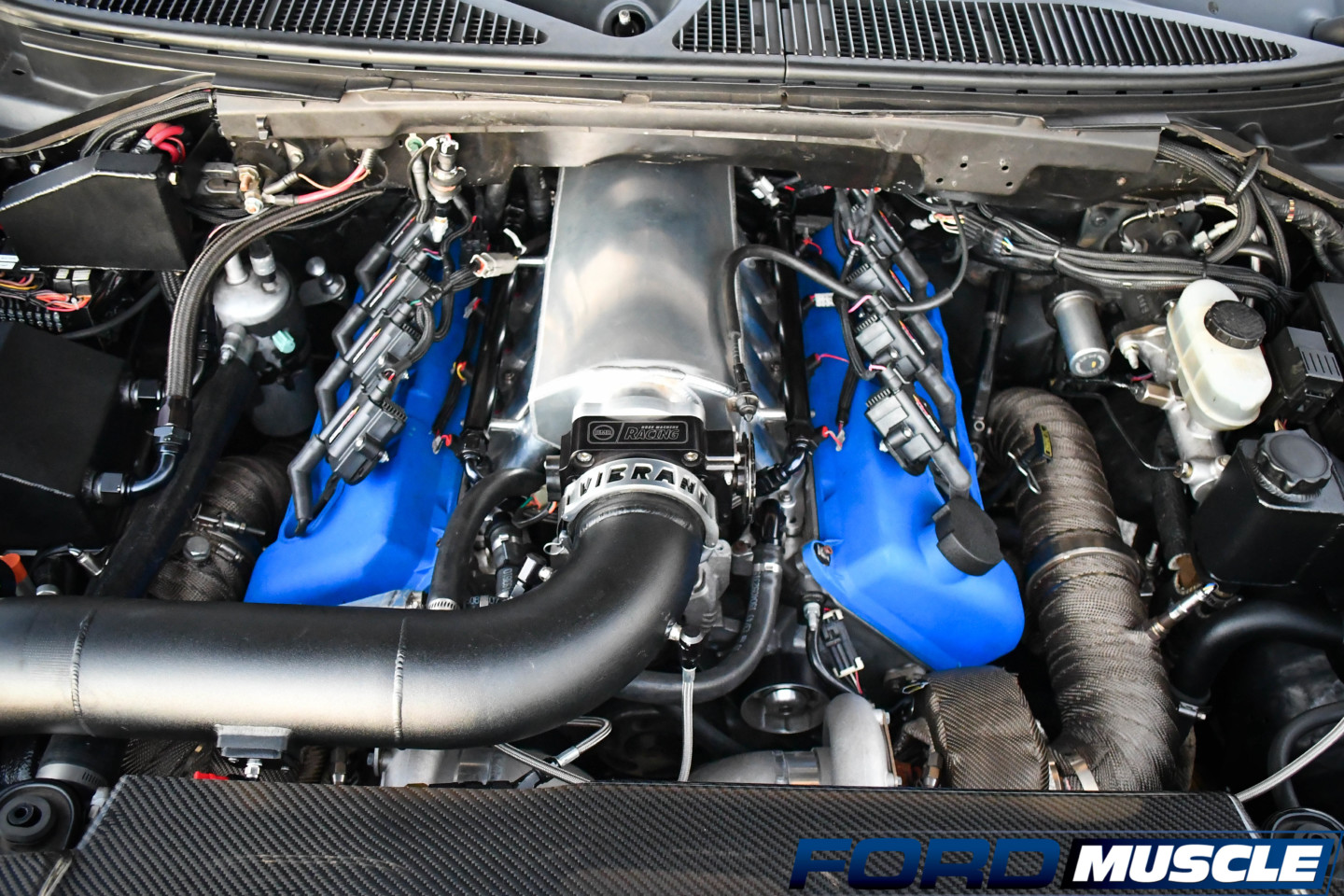
Cranking out the four-digit horsepower number needed to push a Lightning pickup into the sevens is a built 5.4-liter engine based on a Ford GT aluminum block. That block is filled with a Bryant forged crank, Manley billet I-beam rods, Diamond Pistons, a Melling oil pump, and it is held together with ARP Fasteners. Topped by a pair of Ford GT heads fitted with Ferrea Valves, PAC valve springs, and custom RPE turbo-spec camshafts, it breathes in boost through an MMR Roadrunner sheetmetal intake with MMR adapters and a 90mm throttle body from two 7675 Precision turbochargers.
Albino gained an affinity that led to the purchase of a ’69 Road Runner as his first ride. His late friend and mentor, Mark Markow, nurtured his need for speed as the two traveled the NHRA circuit. Upon graduating from college with an electrical engineering degree, he continued playing with fast cars and transformed a ’69 Dodge Dart GTS into a nitrous-injected, 7-second Top Sportsman racer.
He went on the serve as crew chief on Pat Doherty’s ’57 Chevy Pro Mod, and eventually handled a host of duties on Charles Carpenter’s nitrous ’55 Chevy and Jerry Bickel-built ’68 Camaro. Along the way, he opened Total Induction Tuning Solutions in South Windsor, Connecticut, which offers a variety of services, ranging from fabrication and fuel systems to wiring and tuning.
“It was actually a situation that stemmed from a shop that a friend of mine owned. I was working there and had a great deal of input in it, but it was sold to a corporation that had different goals than I did,” Albino recalls. “I decided at that point to join forces with Mark Markow from Markow Race Cars and start my own little automotive electronics business. It grew quickly and soon I found myself looking for a bigger establishment in 2007 that had room for a dyno and a fabrication shop.”
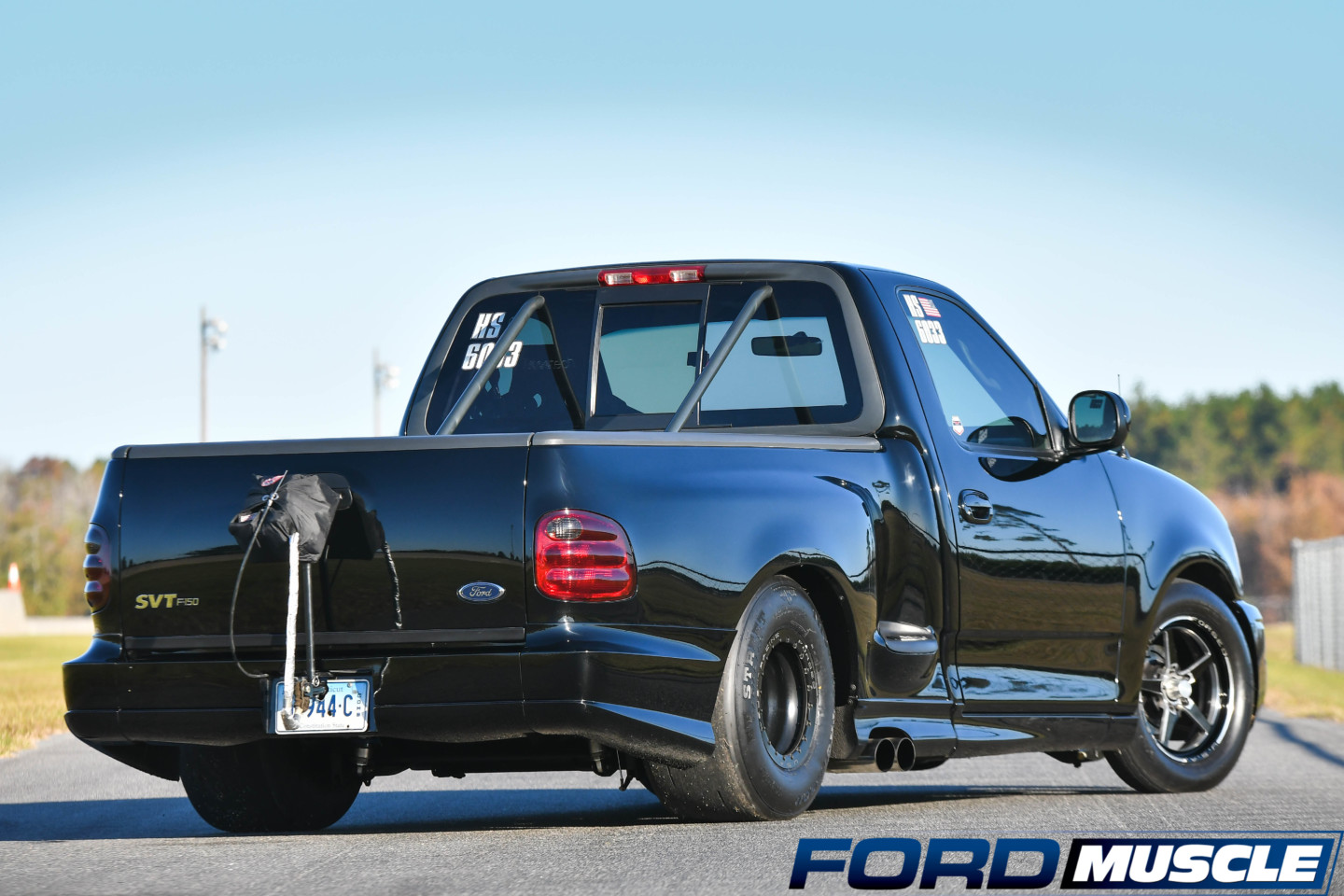
Hastings built custom long-tube headers that clear the way for the exhaust and feed the turbos. The exhaust leads to the factory side-exit exhaust opening. Drawing go-juice from the fuel tank out back are a pair of Holley Brushless Dominator fuel pumps. Albino controls the whole combination with a Holley Dominator EFI system.
Seven years before that expansion, Albino fell in love with the Ford Special Vehicle Team’s just-introduced 2000 SVT Lightning. Sporting a supercharged, two-valve 5.4-liter engine and a sport-tuned suspension, this potent pickup offered an abundance of performance in stock form, and plenty of potential when modified.
“I had a little 4.3-liter V6 GMC Sonoma pickup that I put a ProCharger on. It was fun, but when I saw ads for the Lightning, I instantly knew I wanted a supercharged V8 truck,” Albino says. “I had just purchased a new Audi S4 that my late wife Robyn instantly fell in love with. On our honeymoon, I brought the sales brochure for the truck with me. As I was looking at it one afternoon, she said ‘just give me the Audi and get the Lightning!’ I knew at that point that I certainly chose the right bride!”
Though he raced the truck in its factory supercharged form and added a few modifications, it didn’t take long until he made the leap to his favorite power adder and started running mid 11-second elapsed times with the stock engine.
“I fell in love with the turbochargers while working at a Buick dealership in 1986. One look at the Grand National, and I was hooked. From there I had a string of turbo cars – a Ford Thunderbird turbo coupe, a Mitsubishi Starion, a turbo-diesel Chevy dually, a Buick Regal T-Type, and others,” Albino says. “I always loved the quiet, smooth delivery of power, and the ability to crank it up on demand. With the help of the late, great Mark Markow, we built the first single-turbo system for the Lightning with a 76mm turbo and a stock engine and transmission. It made 575 rear wheel horsepower, which was a blast on the street while it retained all of the emissions and factory options, including the A/C, which it still has to this day.”
Inside, Albino pilots the 7-second Lightning from a Racetech seat from which he can view the stock dash and Holley auxiliary gauges to keep tabs on the truck’s vitals. With his hands on the Billet Specialties steering wheel, he can control the GM 4l80e automatic transmission — via paddle shifters wired through a factory clock spring — for shifting, transbrake, and bumping into the beams.
The single snail was just the first step down the slippery slope to an engine build and more boost. He commissioned Bob Vaulding at RPE Performance Engines to construct a 330 cubic-inch, 5.4-liter DOHC modular engine based on the aluminum block and four-valve cylinder heads from the first-generation Ford GT. Filled with stout internals, it breathes in boost through an MMR Roadrunner sheetmetal intake from the pair of 7675 Precision turbochargers. That boost is cooled by a front-mount, air-to-air intercooler, and methanol injection custom built by Hastings. The engine exhales through his custom long-tube headers.
Harnessing the power created by this twice-boosted engine requires a robust driveline. As such, he installed an MRC-built 9-inch rearend based on a Strange Ultra case and filled with Strange 40-spline axles and 3.89 gears. He removed the stock transmission in favor of a Hughes Performance GM 4L80E four-speed overdrive lockup transmission that is upgraded and maintained by Anthony Appuzo of Accurate transmission. It mates to the aforementioned rear via a PST carbon-fiber driveshaft.
In front Albino’s Lightning benefits from Stifflers control arms and AFCO coilover shocks, and out back it hooks thanks to a custom MRC four-link suspension. It rides on Weld wheels fitted with Mickey Thompson tires.
‘The factory 4R100 had no option for a transbrake and still does not,” he explains. “Swapping to the 4L80E gave me an overdrive lockup with the ability to do the transbrake and bump.”
When he lets go of the button, the twin-turbo-5.4 delivers the goods to the pavement via a custom four-link rear suspension by MRC, with weight transfer help from a front suspension fitted with Stifflers upper and lower control arms, and AFCO coilover shocks.
With all the work and upgrades onboard, you might think that Albino threw caution to the wind on this build, but that’s not the case at all. Even though it has single-digit racetrack credibility, it still retains its streetable demeanor due to his commitment that he wouldn’t go too far.
“The most challenging part of the build was to not chop up a truck that I’ve owned since new, and still make the big power combo work with all the factory restraints. The cage is tucked in so tightly that you almost can’t tell it’s there,” Albino says. “The interior is all stock and all there. When we have a race where we can’t make minimum weight, we pull the passenger seat to shed about 65 pounds, but as soon as the day is done, it goes right back in. The factory column shift was modified to shift the 4L80E, so that’s pretty neat, as well.”
Putting the power of the well-planned combo to the ground results in a ride that doesn’t quite match up to the expectations that might accompany a vehicle that carries the size and weight of full-size truck. In fact, it was a bit unruly until Albino sorted out the aero.
“At first, after about 160 mph, it got a bit hairy to drive. The wipers would dance around, the hood would move all over, the side-view mirrors would fold in and out, but when I blocked off the upper grille area, all of that stopped.” Albino shares. “It’s been north of 180 mph with none of those issues at all.”
As swift as this hauler is on the track, it definitely sneaks up on the uninitiated. With an aggressive personality that is slightly toned-down by the turbos. It will turn heads.
“The reactions have been very positive,” he shares. “I try and keep it as benign-looking as possible, so when it rips off a 7-second pass, people really seem to enjoy that. When I see videos from the stands, the best part is when you hear the reactions of other people watching.”
Even though this combination works well, that doesn’t mean Albino is averse to tweaking it for improved performance, even if it means giving up a bit of streetability.
“I am going to try a Turbo 400 transmission this year with a different first-gear ratio to get it to leave the line and 60-foot a bit better. The best it’s been is a 1.20, I’m dying to get it to go in the teens consistently and get it to go in the mid-4.80 range in the eighth mile,” Albino concludes. “Most of the heavy classes that I like to run have a 3,800-pound minimum weight. I am at 4,000 pounds right now, so I would like to find a way to shed the extra 200-pounds without wrecking the truck. The new TH400 should shed a bit, and I may entertain a lithium battery for those certain events. Maybe I‘ll also run my butt around the block a few times to shave some pounds off my old chassis.”
Seeing this truck get lighter and faster would certainly be impressive, but as it sits, the performance of Albino’s SVT Lightning is nothing short of shocking.
